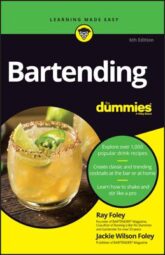-
Bellini: Invented in Harry’s Bar in Venice, Italy, around 1943.
-
Black Russian: Created by bartender Gus Tops of the Hotel Metropoli in Brussels. Gus also dispensed scarves with his silhouette and recipe of his cocktail.
-
Bloody Mary: Invented by Pete Petiot at Harry’s Bar, Paris, France, in 1921; he later became Captain of Bars at the St. Regis Hotel in New York, New York.
-
Daiquiri: Conceived by workers from Bethlehem Steel during a malaria epidemic in the village of Daiquiri near Santiago, Cuba.
-
The Gibson: Named after New York artist Charles Dana Gibson by his bartender Charles Connoly of the Player’s Club in New York. Another version credits Billie Gibson, a fight promoter.
-
Harvey Wallbanger: Created by Bill Doner at Newport Beach, California. The Harvey Wallbanger was started as a fad by Bill and was first served at a bar called The Office.
-
The Martini: Seems that everyone wants to lay claim to having invented and named this classic drink. Here are just some of the stories:
-
By bartender professor Jerry Thomas of San Francisco from a stranger on his way to Martinez, California. Made with gin, vermouth, bitters, and a dash of Maraschino.
-
After Martini & Rossi Vermouth, because that brand was first used in the drink Gin and It, with one half gin and one half Martini & Rossi Vermouth.
-
After the British army rifle: The Martini and Henry. The rifle was known for its kick, like the first sip of a Gin and It.
-
At the Knickerbocker Hotel in the early 1900s, a bartender named Martini di Arma Tiggia mixed a martini using only a dry gin and dry vermouth.
-
-
Negroni: It seems that a certain Count Negroni of Florence once requested a drink that would stand apart from all the Americanos ordered at his favorite neighborhood cafe. The bartender answered his request with a cocktail composed of equal parts gin, sweet vermouth, and Campari, and he garnished the result with a telltale orange slice. Unfortunately for the count, the drink became as popular as the Americano.
-
Side Car: Harry’s New York Bar in Paris, according to owner at that time, Harry MacElhone, after a motorcycle sidecar in which a customer was driving into the bar.
-
Tom Collins: By John Collins, a waiter at Lipmmer’s Old House, Coduit Street, Hanover Square in England. Tom was used instead of John because the drink used Old Tom Gin. Today, a John Collins would use whiskey.

